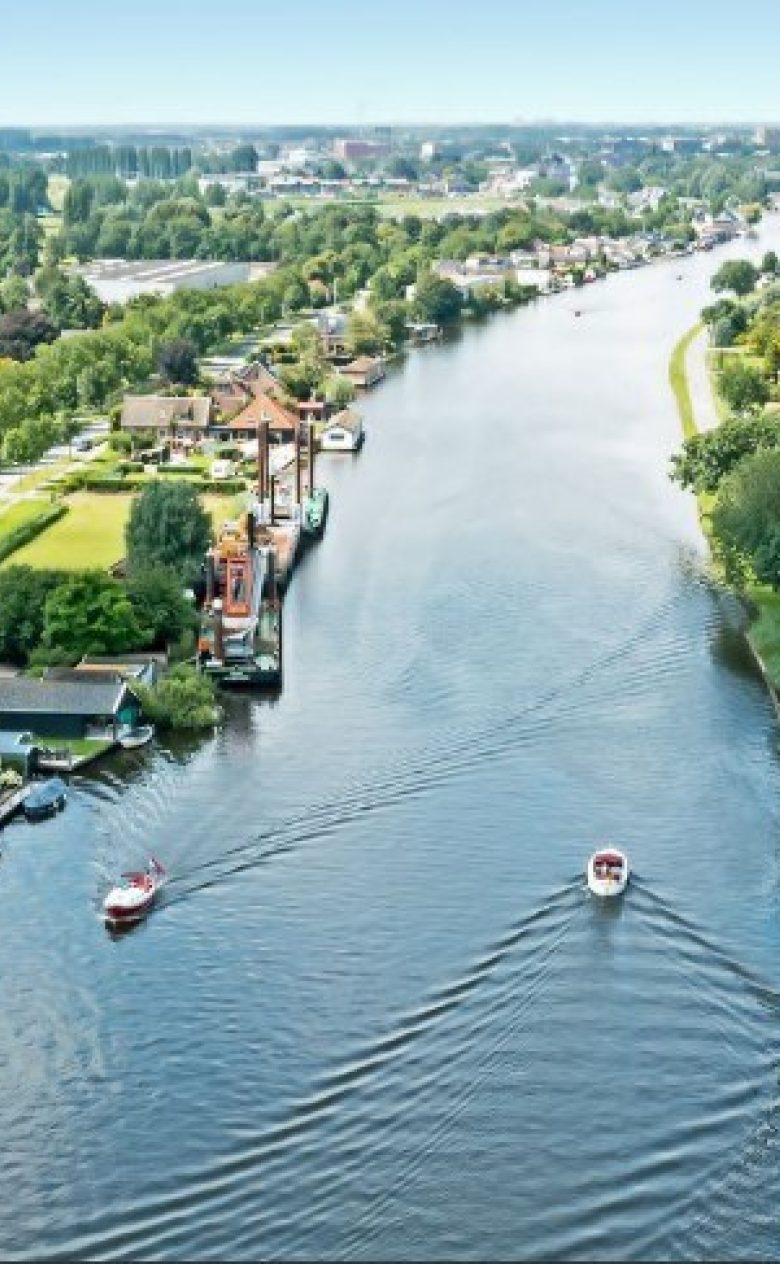Broadening the assessment framework for river policy
The major rivers that flow through the Netherlands have a significant impact on our nature, culture, economy, and food and water supplies. To quantify the effects of our river and floodplain management on these so-called ecosystem services, a broader assessment framework has been developed by Sien Kok, a researcher at Deltares and WUR. She did this as part of her doctoral research through the European project MERLIN, which promotes the restoration of rivers.

The MERLIN project was initiated as part of the European Union's Green Deal ambitions. The project looks at where and how the restoration of freshwater ecosystems is necessary and possible for both people and nature in Europe. This would make an important contribution to the recovery of biodiversity and the protection of ecosystem services. Ecosystem services are the benefits people gain from a healthy ecosystem, such as freshwater supplies or as a breeding ground for fish and coastal protection.
Need for a broader assessment framework
The Netherlands is part of four international river basins: the Rhine, Maas, Scheldt and Eems. Following the Room for the River programme at the start of this century, work is now underway on the successor: Room for the River 2.0. This has revealed an increasing need for a broader assessment framework for policy and management of rivers and floodplains.
Researcher Sien Kok: ‘Internationally, river management was often approached from one specific aspect, such as flood protection or water quality. But if you only consider one aspect, you miss the effects on and needs of other aspects, and that is not useful given the various tasks at hand. In addition, we often find it valuable these days to also have insight into the effects of policy on the well-being of people and nature.’
In her paper, Kok looks at the ecosystem services of the Rhine tributaries, a river basin in which practical research is being conducted for the European MERLIN project.
The methods I have used are fairly scalable, but for a number of services a translation to the local scale would be necessary.
Exchange of interests
In her paper, Kok defines thirteen ecosystem services, which she tests against river management strategies. Kok: ‘You see that the more you move towards floodplain restoration, with a more multifunctional design, all kinds of so-called “providing, regulating and cultural services” score better. Think of carbon sequestration, habitat diversity and regional recreation. This is at the expense of agriculture in the floodplains: there is always a balancing of interests. By mapping this out, you make the assessment more transparent and broader. The value that is then assigned to it is still somewhat soft, but less dependent on sentiment.’
To set up the ecosystem framework, Kok used various models and studies of Rijkswaterstaat and by colleagues at WUR and Deltares.
Integrated river management
The research results contribute to the formulation of and communication about nature restoration and integrated river management in the Netherlands and Europe. The quantification of (differences in) the provision of ecosystem services is a first step in broadening the assessment framework. Current research is focussing on clarifying the monetary value. Kok: ‘Expressing these softer, social benefits in monetary terms is important for the cost-benefit analysis, a common tool in our policy development.’
Regarding the application of the assessment framework in specific floodplain projects, for example in the future for projects such as Room for the River 2.0 or the Programmatic Approach for Large Waters, Kok says: ‘The methods I have used are fairly scalable, but for a number of services a translation to the local scale would be necessary. The German handbook for quantifying ecosystem services offers good examples of how to tackle this pragmatically, but this would need to be elaborated for our context.’


